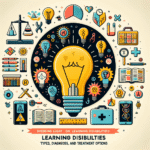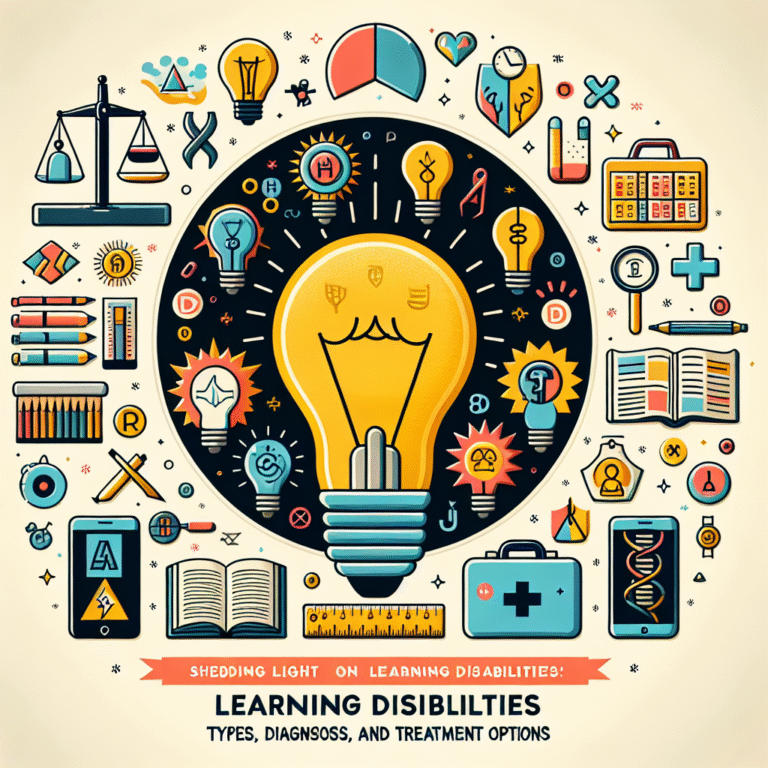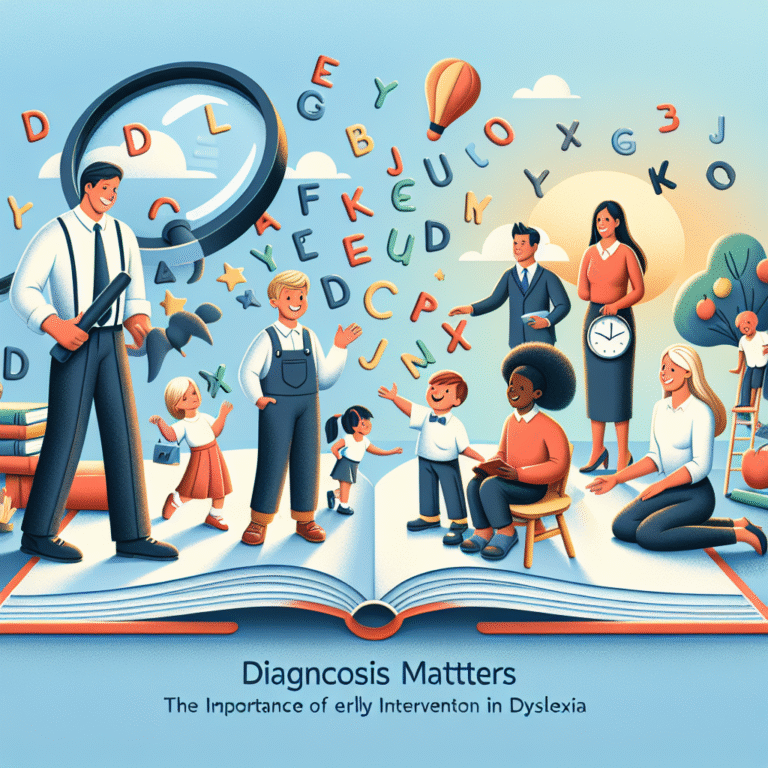Breaking Barriers: The Essential Importance of Vocabulary Acquisition for Students with Learning Disabilities
Introduction
In today’s world, being able to communicate effectively and comprehend written material is crucial for success in both academic and professional realms. However, for students with learning disabilities, these skills can often feel like insurmountable mountains. Understanding the topic of Breaking Barriers: The Importance of Vocabulary Acquisition for Students with Learning Disabilities not only shines a light on a fundamental aspect of education but also empowers educators, parents, and students alike to foster an environment conducive to growth and success.
As vocabulary serves as the backbone of both oral and written communication, its acquisition is particularly essential for students with learning disabilities. Such students may face unique challenges, but with the right strategies and support systems in place, they can thrive. This article delves into the vital role vocabulary plays in education, particularly for students facing learning disabilities, and presents actionable insights to help break down barriers that hinder their educational achievements.
The Role of Vocabulary in Academic Success
Vocabulary: More Than Just Words
Vocabulary constitutes more than a collection of words; it forms the foundation of literacy, understanding, and effective communication. For students with learning disabilities, limited vocabulary can lead to difficulties in reading comprehension, writing, and overall academic performance. A rich vocabulary not only aids in better expressing thoughts and ideas but also enhances students’ ability to understand complex concepts.
Why Vocabulary Acquisition Matters
The acquisition of vocabulary significantly impacts reading comprehension, critical thinking, and even social interactions. According to research, students with robust vocabularies tend to have heightened academic achievement compared to their peers with limited vocabulary. For students with learning disabilities, this correlation can further emphasize the need for targeted vocabulary instruction.
The Brain and Vocabulary Development
From a neurological perspective, vocabulary development plays a crucial role in cognitive processes. Studies indicate that exposure to a rich vocabulary can enhance neural connections in the brain, leading to improved cognitive function. This makes vocabulary acquisition particularly vital for students with learning disabilities who may already struggle with cognitive processing.
Strategies for Enhancing Vocabulary Acquisition
1. Use of Multisensory Techniques
Research shows that incorporating multisensory techniques is effective for students with learning disabilities. Combining visual, auditory, and kinesthetic approaches can facilitate vocabulary acquisition. For instance, pairing words with images, sounds, and physical activities can create a more engaging learning experience.
Case Study: The Power of Multimedia
In a study conducted at a special education school, teachers implemented a multimedia vocabulary program that utilized videos, flashcards, and hands-on activities. Results showed a 30% increase in vocabulary retention among students after just six weeks. This underscores the effectiveness of using diverse modalities to cater to varying learning styles.
2. Contextual Learning
Teaching vocabulary in context rather than isolation can significantly enhance understanding. Using books, real-life scenarios, and discussions helps students relate new words to their existing knowledge.
Table 1: Comparison of Contextual vs. Isolated Vocabulary Learning
| Learning Method | Vocabulary Retention Increase | Student Engagement Level |
|---|---|---|
| Contextual Learning | 40% | High |
| Isolated Learning | 15% | Moderate |
3. Explicit Instruction
While immersion and contextual learning are effective, explicit instruction also plays a crucial role. Teaching word meanings, derivations, and usage strategies directly can provide students with a strong foundation.
4. Building a Vocabulary-Rich Environment
Creating an environment rich in words can significantly impact students’ vocabulary acquisition. Vocabulary walls, word of the day practices, and encouraging discussions can infuse daily life with language.
Case Study: Classroom Transformation
A teacher in a resource classroom redesigned her environment to include vocabulary-rich decorations, interactive word games, and regular vocabulary discussions. Over a year, her students demonstrated a 50% improvement in standardized vocabulary assessments, illustrating how a vibrant learning environment can be transformative.
Overcoming Challenges in Vocabulary Acquisition
Recognizing Individual Needs
Not all students with learning disabilities face the same challenges. Understanding each student’s unique needs is crucial for tailoring vocabulary instruction effectively. By assessing individual learning profiles, educators can create personalized vocabulary plans.
Encouraging Positive Mindsets
Building a culture of encouragement and positivity is essential for learning. Students who feel supported are more likely to engage in vocabulary acquisition and take risks in their learning.
Assessment Tools for Vocabulary Development
Frequent Check-Ins
Regular assessments can help track vocabulary growth and identify areas needing additional support. Tools such as vocabulary quizzes, oral presentations, and interactive word games can provide valuable insights.
Utilizing Technology
Technology offers myriad resources for vocabulary assessment and development. Educational platforms and apps can provide engaging activities that cater to diverse learning needs while also allowing for tracking progress in real time.
The Power of Collaboration
Involving Families
Engaging parents and families in vocabulary acquisition efforts can create a more cohesive support system for students. Providing parents with resources and strategies can extend vocabulary learning beyond the classroom.
Collaboration with Specialists
Collaborating with speech-language pathologists and special education teachers can yield strategies tailored to individual needs, ensuring that vocabulary acquisition is both effective and meaningful.
Conclusion
Breaking barriers to vocabulary acquisition among students with learning disabilities is more than an educational imperative; it is a moral responsibility. By understanding the profound impact that vocabulary has on learning, educators and parents can equip these students with the tools needed to succeed.
Adopting a multifaceted approach that includes multisensory techniques, contextual learning, explicit instruction, and a supportive environment can significantly enhance vocabulary development. As we advocate for these students, let us remember that every word learned is a stepping stone toward their academic and personal growth.
FAQs
1. Why is vocabulary acquisition important for students with learning disabilities?
Vocabulary acquisition is vital as it directly impacts reading comprehension, communication, and overall academic success. Students with learning disabilities often face unique challenges, making vocabulary acquisition even more critical for their educational growth.
2. What are some effective strategies for teaching vocabulary to these students?
Some effective strategies include multisensory techniques, contextual learning, explicit instruction, and creating a vocabulary-rich environment.
3. How can parents support their children’s vocabulary development?
Parents can support vocabulary development by engaging in daily conversations, reading together, and providing access to varied reading materials. Creating a word-rich environment at home encourages vocabulary expansion.
4. What role does technology play in vocabulary acquisition for these students?
Technology can enhance vocabulary acquisition through educational apps, interactive games, and online resources that make learning engaging and personalized.
5. How can educators assess vocabulary growth effectively?
Educators can assess vocabulary growth through frequent check-ins, quizzes, oral presentations, and utilizing technology for interactive assessment tools.
In summary, breaking barriers in vocabulary acquisition for students with learning disabilities is an essential endeavor. By emphasizing the importance of these skills, we can ensure that every student has the opportunity to thrive academically and socially.









